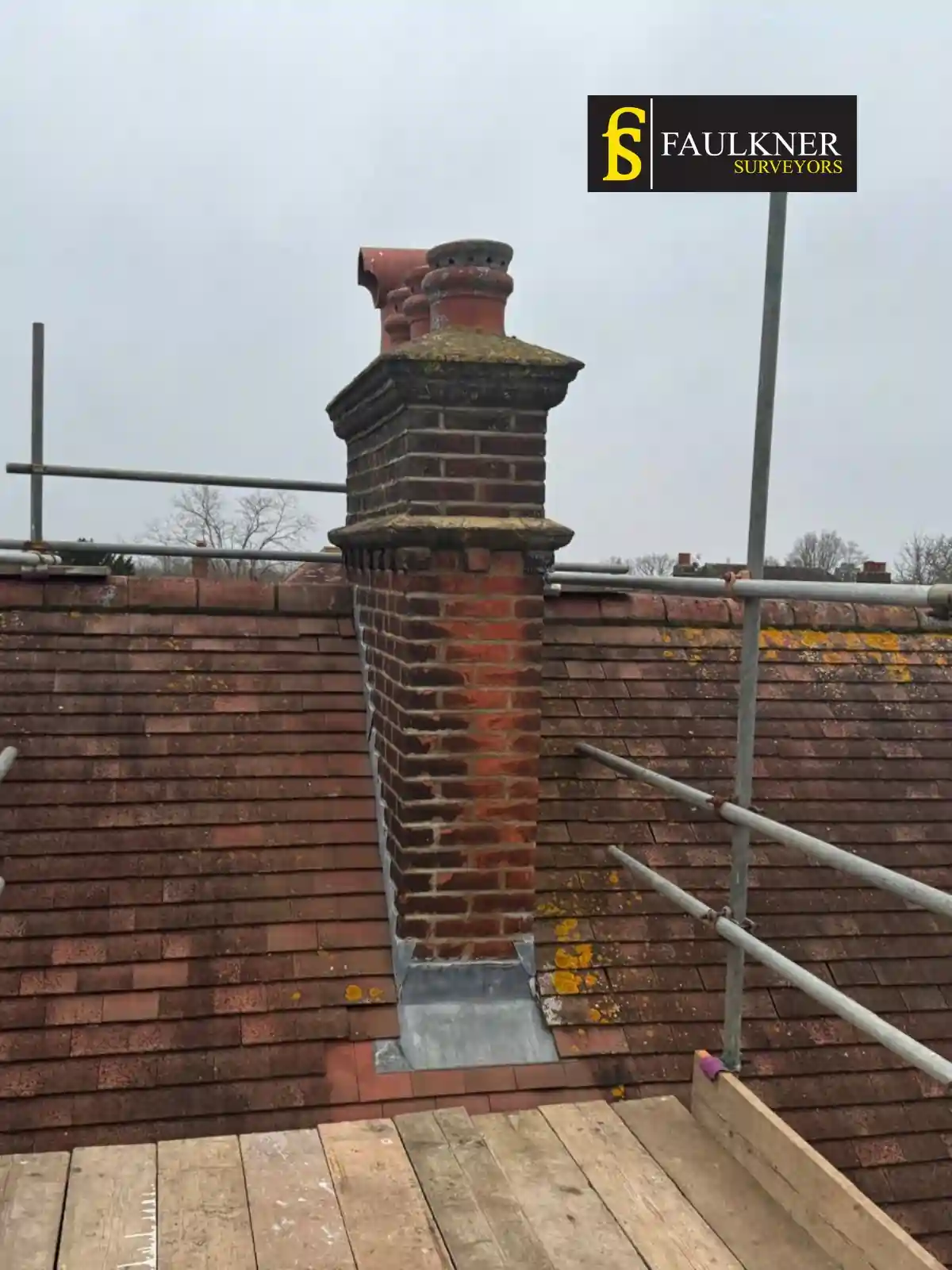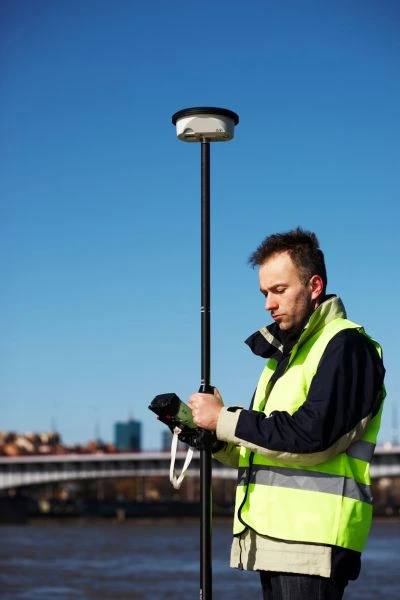Planning Work Near a Shared Wall? Here’s Why a Party Wall Surveyor Should Be On Your Radar
Thinking about a home upgrade—maybe a rear extension, digging out new foundations, or converting the loft into a guest room? It’s exciting, and there’s usually a lot going on: talking to your architect, getting planning permission, booking the builder.
But if your plans involve a wall or boundary that’s shared with a neighbor, there’s something you really shouldn’t overlook.

You might need a Party Wall Surveyor.
The Party Wall etc. Act 1996 sets out clear rules for this kind of work—rules designed to protect everyone involved. A Party Wall Surveyor helps make sure those rules are followed properly, keeping your project above board and avoiding unnecessary friction with your neighbor.
Bringing one in early doesn’t just tick a legal box—it can save you a lot of stress and help keep things neighborly. Let’s take a closer look at what they do and why they’re such a key part of the process.
So… What Does a Party Wall Surveyor Actually Do?
When people think of renovations, they usually picture blueprints, cement mixers, and planning approvals. Legal stuff? That’s often an afterthought—until it suddenly becomes a problem.
If your project affects a shared wall or structure (also called a party wall), a Party Wall Surveyor becomes one of your most important team members. Their job isn’t just ticking legal boxes—they help keep everything smooth and fair for both parties involved. Can I use the same party wall surveyor as my Neighbor?
Here’s what they really do:
- Make sure the proper legal notices are sent out correctly and on time
- Record the condition of your neighbors property before any work begins (just in case)
- Step in if there’s a disagreement and help resolve it fairly
- Write a legal document—called a Party Wall Award—that spells out how the work should go ahead
And the best part? Even if you hire us, we don’t take your side. Once appointed, we are legally obligated to act independently and protect the interests of both neighbors.

Why Their Neutral Role Really Matters
Neighbours and renovations don’t always mix. Even if things seem friendly now, shared walls can quickly stir up concerns and disagreements.
That’s why the surveyor’s neutrality is so important.
They’re not working for you or against your neighbour—they’re there to interpret the law fairly and apply it in a way that protects everyone involved.
Here’s how that works:
- Their decisions are backed by legal authority—the Party Wall Award is binding and enforceable
- They don’t take sides
- If a dispute arises, they handle it calmly and professionally, without personal bias
- They rely on their experience and knowledge of both construction and the law
In other words, they’re the calm head in the room when emotions start to rise.
Can a Surveyor Really Help Avoid Disputes Before They Start?
Absolutely. One of the smartest reasons to bring in a Party Wall Surveyor early is to prevent problems before they escalate.
One of their key tasks is preparing a Schedule of Condition—a detailed report of the neighbour’s property, often including photos and written notes. This helps avoid the classic “your builders cracked my wall” debate, because there’s already a clear record of what the wall looked like before the work started.
They also prepare the Party Wall Award, which sets expectations for:
- How and when the work will be carried out
- What safeguards are in place
- Access rights (if your builders need to step onto the neighbour’s land)
- Working hours and site management
With everything spelled out in advance, there’s much less room for misunderstandings or arguments later on.
What About the Legal Notice—Who Sends That?
When planning any works near a shared wall or structure, serving a Party Wall Notice is one of the first legal steps.
While some homeowners choose to handle it themselves, many prefer to let a Party Wall Surveyor take care of it—because getting the notice wrong can delay everything.
Here’s what the surveyor handles:
- Making sure the notice includes all the right information
- Serving it within the correct timeframe (usually 1 or 2 months before work starts)
- Explaining the implications clearly so your neighbour understands their rights
This sets the tone for a respectful and professional process from the very beginning—and helps avoid unnecessary back-and-forth.
How Does the Surveyor Record the Neighbour’s Property Condition?
The Schedule of Condition might sound technical, but it’s really just a practical way to protect both you and your neighbour before any building work begins.
So, what actually happens during this process?
- A Friendly Visit – The surveyor pops over to your neighbour’s property to take a good look around. They’ll check for any existing issues like small cracks, signs of damp, or anything else worth noting.
- Photos for Peace of Mind – They’ll take clear, detailed photos of the areas closest to your planned works. This provides a snapshot of how everything looked before the first tool is lifted.
- Jotting Things Down – Any marks, damage, or quirks spotted during the visit are written down clearly—along with exactly where they are, so there’s no confusion later.
- Sometimes Even a Quick Video – If needed, the surveyor might also take a short video to give an even better overview of the property’s current condition.
- Everyone Gets a Copy – Once all that’s done, the findings are pulled together into a signed report. Both you and your neighbour get a copy, so if any questions come up later, you’ve both got something solid to refer to.

Why Is the Party Wall Surveyor in Charge of Drafting the Award?
The Party Wall Award is the backbone of the whole agreement.
It’s a formal document that lays out everything: what work is being done, how it’ll be carried out, what precautions are in place, and even when the work is allowed to happen.
The surveyor drafts it because:
- They’ve seen both sides and understand the concerns of each neighbour
- They’re trained to write it in a way that complies fully with the Party Wall Act
- They remain impartial, ensuring no one gets unfair treatment
- It includes references to the Schedule of Condition, so there’s a record to fall back on
Having this agreement in writing keeps everyone protected—and helps avoid surprises during the build.
Why Site Visits Matter in the Party Wall Process
When it comes to shared walls or close boundaries, it’s not enough to just sit behind a desk and shuffle papers. That’s why site visits are such a vital part of a Party Wall Surveyor’s job—they give us a real-world look at what’s going on.
Here’s what usually happens during those visits:
- Getting a Baseline – The first visit is all about taking a close look at the neighbour’s property before any building starts. We’re checking for cracks, marks, or anything else that should be documented ahead of time.
- Understanding the Plans – We don’t just glance at the blueprints. We review the details of the proposed work on-site so we can spot any potential issues or risks early on.
- Keeping an Eye on Progress – In some cases, we’ll pop back during the building phase to make sure everything’s being done as agreed in the Party Wall Award.
- Checking After It’s Done – Once the work is complete, we’ll carry out a final inspection to help clear up any worries or claims about damage.
These visits aren’t just routine—they help make the whole process fair, clear, and grounded in fact.
What If You and Your Neighbour Don’t See Eye to Eye?
Disagreements between neighbours happen—it’s completely normal. But when building work is involved, those disagreements can get complicated fast. That’s where the Party Wall Surveyor plays a key role.
If things get tense or unclear, the surveyor helps calm the waters by stepping in as a neutral, legal expert.
Here’s how they handle it:
- Looking Over the Paperwork – They’ll go through the project plans and any concerns raised by either side.
- Talking It Through – The surveyor will speak to both neighbours and take a proper look at the properties to understand what’s going on.
- Issuing a Clear Agreement – If needed, they’ll prepare a Party Wall Award. This legal document sets out how the work should move forward, making sure both sides are protected.
The goal isn’t to take sides—it’s to keep things fair, resolve disputes quickly, and stop them from turning into expensive legal battles. Most importantly, it helps the building work get back on track without turning into a neighbourhood drama.

Does the Surveyor’s Job End Once the Award Is Signed?
Not always.
In many cases, the surveyor remains involved until the project is completed—especially if the work is complex or if additional visits are required.
They might:
- Monitor progress to make sure the work sticks to the agreed terms
- Return to reinspect the neighbour’s property afterward
- Help address any claims of damage or concern post-work
So while the signed Award is a major step, the surveyor’s role often continues until the dust has truly settled.
For Further Information Please Call Us Today 03300100262
